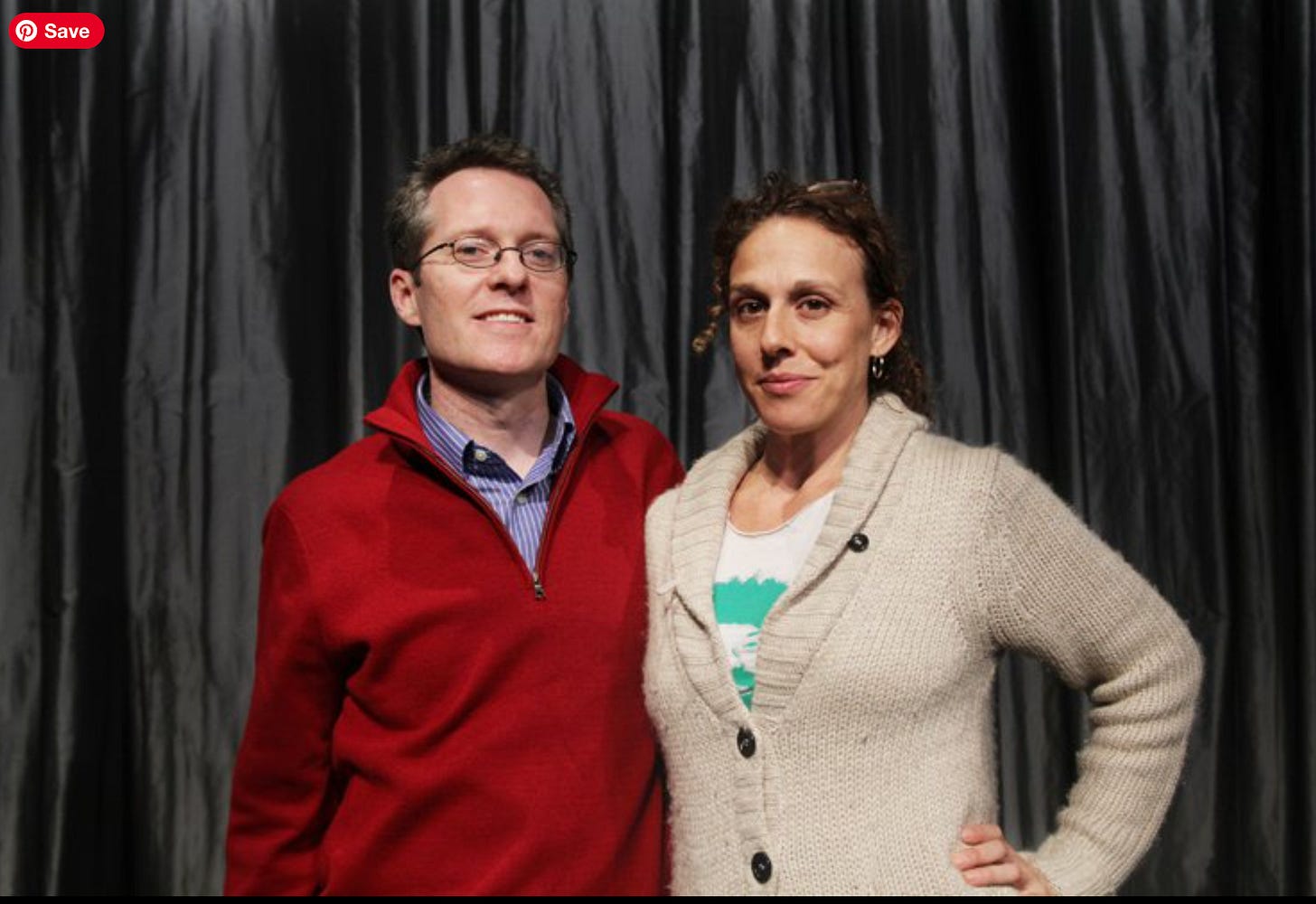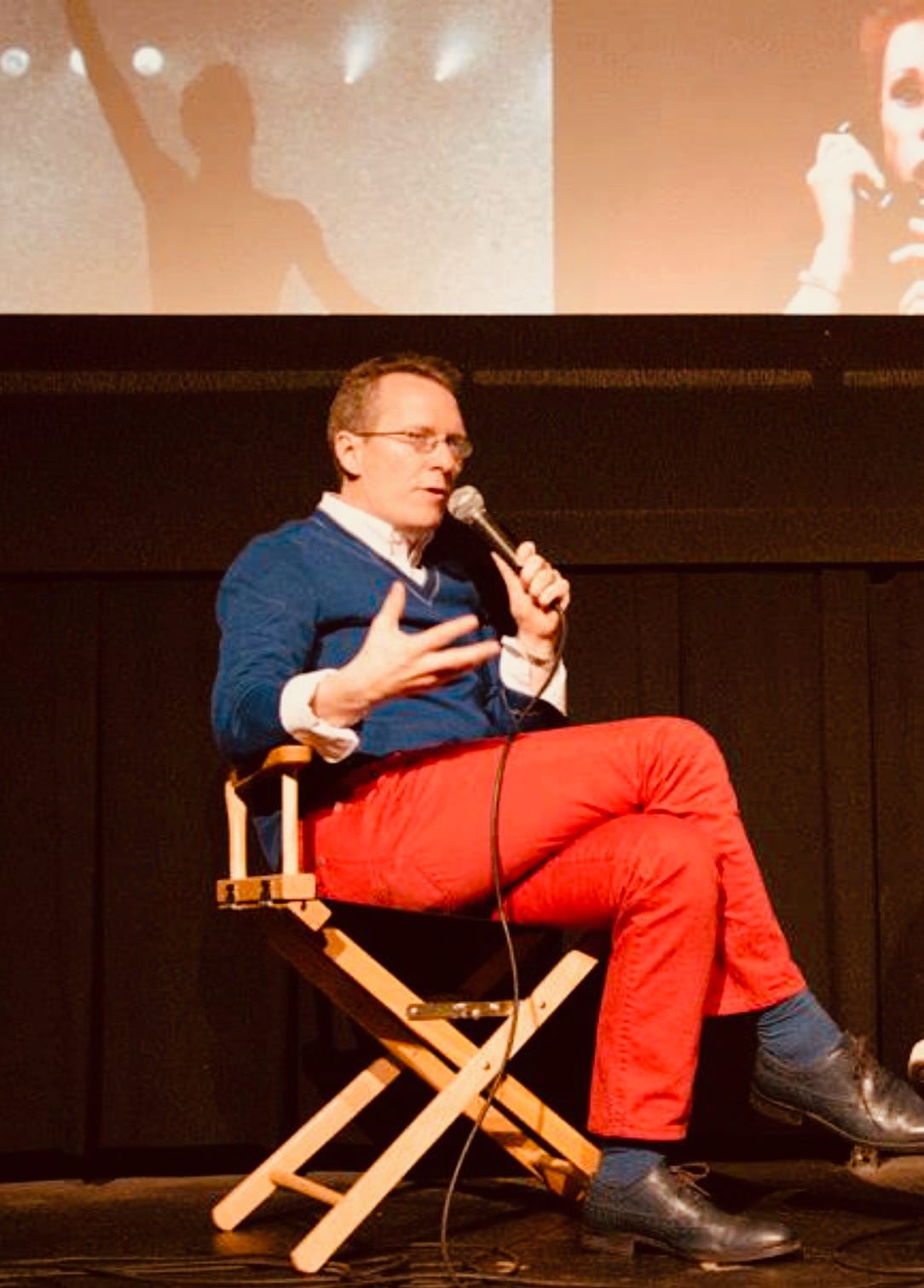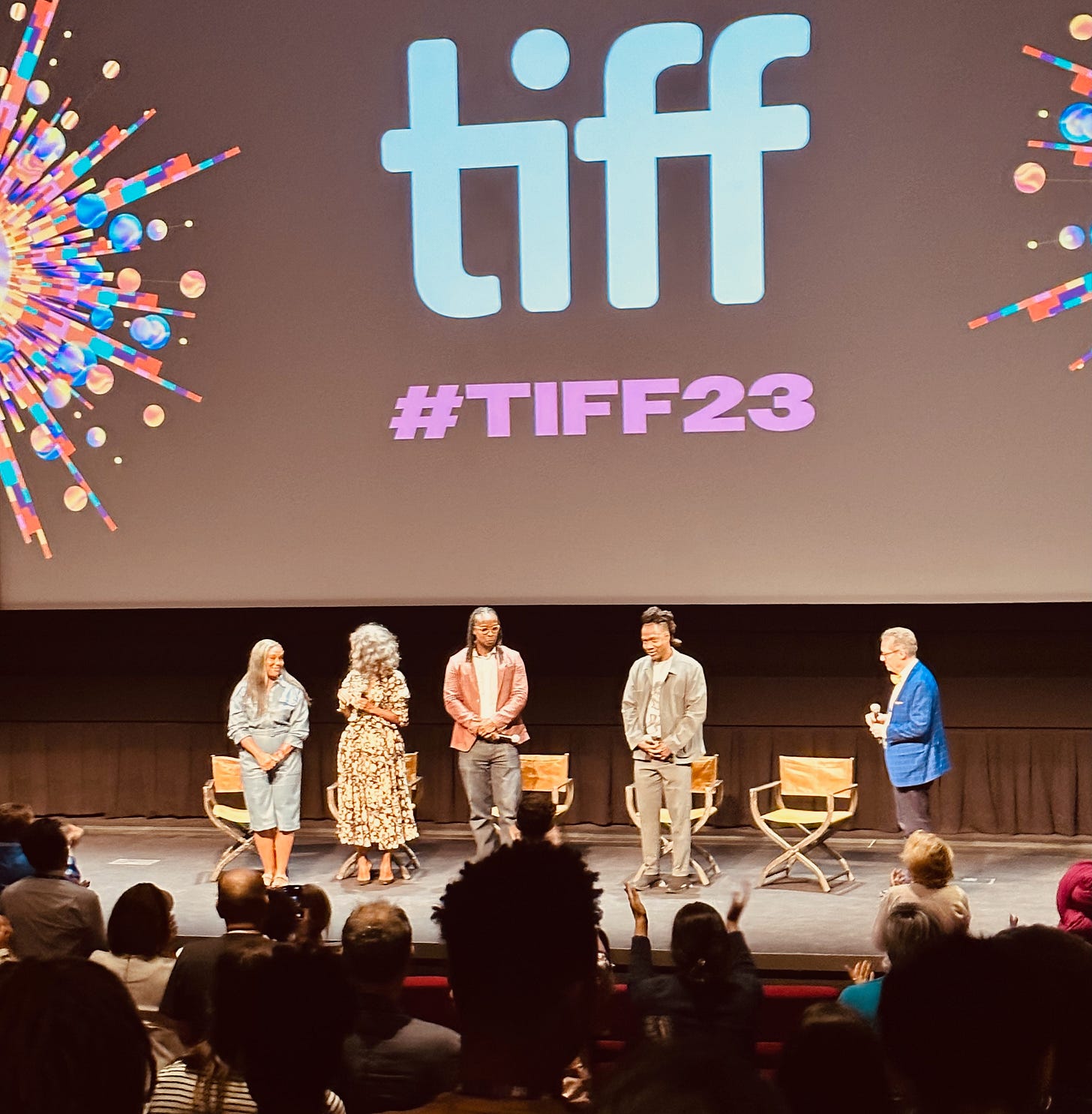The Evolution of Documentary Film: Festival Insights, 20 Years of Filmmaking, and Picks from the Vault with Thom Powers
Last week, we did a live chat with Thom Powers. This week, I’m diving deeper—exploring Thom’s journey, how much docs have (haven't changed), and delve into the art of curating films for festivals.
When I met Thom Powers in the mid-2000s, we were both at different stages of our careers. Thom had just started hosting the weekly documentary-screening series Stranger Than Fiction (STF) in Manhattan. It was a seminal documentary series at the IFC Center movie theater that ran from 2005 to 2018. In those early years, I used to go to screenings when I was working my way up from being an intern to getting paid gigs. Watching films and hearing Thom interview directors at Q&A’s was key to my education in the world of documentary filmmaking. Whenever anyone asks me for career advice, I always suggest attending as many screenings with Q&A’s as possible because I learned so much from attending STF.
Since founding Stranger Than Fiction, Thom has worked for twenty years to champion documentaries with the goal of connecting films and audiences. To do this, he co-founded DOC NYC and the Montclair Film Festival, he is the lead documentary programmer of the Toronto and Miami Film Festivals, and he hosts the Pure Nonfiction podcast and WNYC’s Documentary of the Week. That is just the shortlist of all he does... while also watching a massive amount of documentaries to program for all these venues.
⚡ Short on time? Skip ahead to Film Festival Programming 101 for key learnings on the festival game. (This was my favorite part to delve into- I learned so much.)
New York in the 1990s
Thom did not get his start as a film curator, but making documentaries. “I came to New York in 1994 and started working in documentaries. It did not feel like its own industry,” Thom explained. “Then it felt like a very niche sideline to the bigger cultural trend at that moment in the mid 90s, which was independent fiction films by Quentin Tarantino, Kevin Smith, Spike Lee…and documentary filmmaker Michael Moore. So that's kind of the way it was in the nineties into the early two thousands.”
Between 1994 to 2005, Thom worked on multiple projects, including a hit HBO/Cinemax documentary on Breasts in 1997 and then a follow-up called Private Dicks: Men Exposed in 1999. Even with these successful films under his belt, he was only earning a “meager” living making films. (Funny how docs have never been a way to get rich!!) Then around 2005 he decided to chart a different course. “I realized my favorite part of making a documentary was showing it to an audience. I enjoyed the challenge of asking: who needs to see this film? And then trying to bring those people together. There’s an excitement when an audience connects to a film. I could feel it after every STF night as people spilled out from the IFC Center lobby onto the Sixth Avenue sidewalk and they just wanted to keep talking. I loved giving that experience to other filmmakers because I know how much it meant to me.”
At the same time, Thom noticed that many of the documentaries that played at Sundance, SXSW, or Toronto back then didn’t have a way to show their films in New York City. “There were quite a lot of people who had films that they had bootstrapped their production on, or gotten grants to make, or whatever, and now they needed to get them sold. They needed an audience. They needed someone to write about them. And, that was a motivating factor to start Stranger Than Fiction.”
Films being bootstrapped together and needing help finding audience and buyer attention?
Uhhh, that is still how it works today for the majority of films.
This is the first of many observations Thom shared about the state of documentary back then that reveals that things have not changed much….
New Films and Oldies But Goodies
The very first Stranger Than Fiction in 2005 was a screening of 51 Birch Street, directed by Doug Block. I reached out to Doug to ask about the reception to STF in the NYC doc scene when it started. “It was such a shot in the arm for both doc filmmakers and the NYC doc community… As far as whether it helped with distribution, I'm sure it did as it built on the excitement of the showings at TIFF, IDFA, and SXSW. ... I think I knew almost everyone who came that night, and it was unforgettable. ... [It was] truly one of the highlights of my life, much less my film career."
Thom showed not only new work at Stranger Than Fiction; notably, some of the most popular screenings were of older films that were hard to see elsewhere. Here are some of the highlights:
(Here is a link to the list of all the films they screened.)
Joyce at 34 (1974) Directed by Joyce Chopra, who was then an up-and-coming director. While her career was gaining steam, she got pregnant, and although she had always wanted to have a family, the film captures how tough it was. “Very much in the spirit of that generation of feminists, this tension between the obligation she was going to have as a mother and the the unequal expectations compared to the responsibilities expected of of her husband. What was so striking to watch that film forty years later in the early 2000s is how little had changed.“
Jane (1962) Made for Drew Associates in the early 60s, the company that pioneered the Direct Cinema movement and that developed lightweight cameras and synchronized sound recording that allowed filmmakers to capture real events with unprecedented intimacy and spontaneity. The film Jane directed by D. A. Pennebaker and Hope Ryden, is about Jane Fonda. It’s an example of early cinema verite, and back then it was not on DVD or VHS. Now it is on YouTube. “For me, that was a great experience because it shined a light on Hope Ryden, whom I think is an overlooked female filmmaker at Drew Associates.”
When Mother Comes Home for Christmas (1995) by the Indian American filmmaker Nilita Vachani. It played at New Directors New Films in 1996 and received a glowing review by Stuart Klawans in The Nation, “Vachani is unlikely to attract a U.S. Distributor for the film,” Klawans wrote. “That’s why, with apologies, I now describe something you might never see…”
I was surprised to learn that even in 1996, there were great documentaries on the film festival circuit that had no chance of distribution. Now it works the same way!! In 2025, many of the year's best documentaries face the same lack of distribution. In January, The New York Times published an article, Documentaries Ripped From the Headlines Are Becoming Harder to See, about how even this year's Oscar contenders are struggling for distribution. Indeed only one of the Oscar-nominated documentaries this year, Sugarcane, is being widely distributed by a big streamer (National Geographic on Hulu).

So what has changed in the last twenty years in documentary film?
Thom noted that now as then films take on similar subjects (politics, personal stories); what has changed is who makes the films. “We have to take stock of the last twenty years, and there have been more opportunities for filmmakers from communities who previously had films made about them.… You think about films on transgender filmmakers, like the big film a couple decades ago was Southern Comfort which, you know, I think remains an incredibly strong and compassionate film. But you know, up until a few years ago, we didn't see that many films about the transgender community made from within the community.”
A Revelation About Doc Audiences
With Stranger Than Fiction and DOC NYC, Thom thought the core audience for both was people involved in making documentary films. But over the years, he saw that there was a much bigger potential audience for documentaries than just people who make them.
“A film that really brought that home to me was a film called No Look Pass in the second year of DOC NYC. It was about a Burmese lesbian college basketball player at Harvard. Like many first films, it wasn’t a fully polished production. So I had hesitancy over that. But the filmmaker Melissa Johnson did a great job of assuring me that she knew how to rally an audience. Sure enough, when it screened at DOC NYC, she had packed the house with people who saw some part of themselves in that film. It was very emotional and got great press. That taught me that a documentary has other ways to reach people than the quality of its camerawork or the sophistication of its editing. It made me realize that the way I wanted to practice festival curation wasn’t just about programming the films. It’s also about finding the right audience.”
***Film Festival Programming 101 with Thom Powers***
When I first started working in film, I assumed I knew how film festivals worked. I thought programmers would watch all the submissions and then they pick the best films.
Keep reading with a 7-day free trial
Subscribe to Lingo on Docs to keep reading this post and get 7 days of free access to the full post archives.






